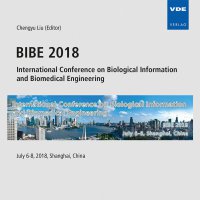In silico study of Pb++ effects on ventricular action potential, as an air particulate matter component of Medellin city
Conference: BIBE 2018 - International Conference on Biological Information and Biomedical Engineering
06/06/2018 - 06/08/2018 at Shanghai, China
Proceedings: BIBE 2018
Pages: 5Language: englishTyp: PDF
Personal VDE Members are entitled to a 10% discount on this title
Authors:
Tobon, Catalina; Palacio, Laura C. (MATBIOM, Facultad de Ciencias Básicas, Universidad de Medellín, Medellín, Colombia)
Buitrago-Sierra, Robison (MATyER, Instituto Tecnológico Metropolitano, Medellín, Colombia)
Saiz, Javier (CI2B, Universitat Politècnica de València, Valencia, Spain)
Abstract:
Exposure to air pollution promotes the occurrence of cardiovascular diseases. Particulate matter (PM) is considered the most severe pollution problem due to can affect the heart and cause serious health problems; its physicochemical characterization is necessary to understand the toxicology in each city. Medellin is one of the most polluted cities in America, reason why the characterization of PM emissions is of crucial importance to understand its nature and the effects it has on health. Then, a physicochemical characterization of PM in the city of Medellin was developed. Results evidence the nature of the main components present in the PM and their wide range of sizes and morphologies. Between the observed elements, lead (Pb++) appears as one of the main and due to his toxicity, was chosen to perform an in silico study of the effect of Pb++ on ventricular action potential. Base on experimental studies a model of the Pb++ block effect on the L-type calcium channel was developed and it was incorporated in a mathematical model of human ventricular cell. Pb++ showed a pro-arrhythmic effect at high concentration, on cardiac ventricular cell through shortening of action potential duration. In silico studies can lead to better understand the mechanism of how air pollution could trigger cardiac diseases and could allow improving the techniques of prevention of this pathologies.


